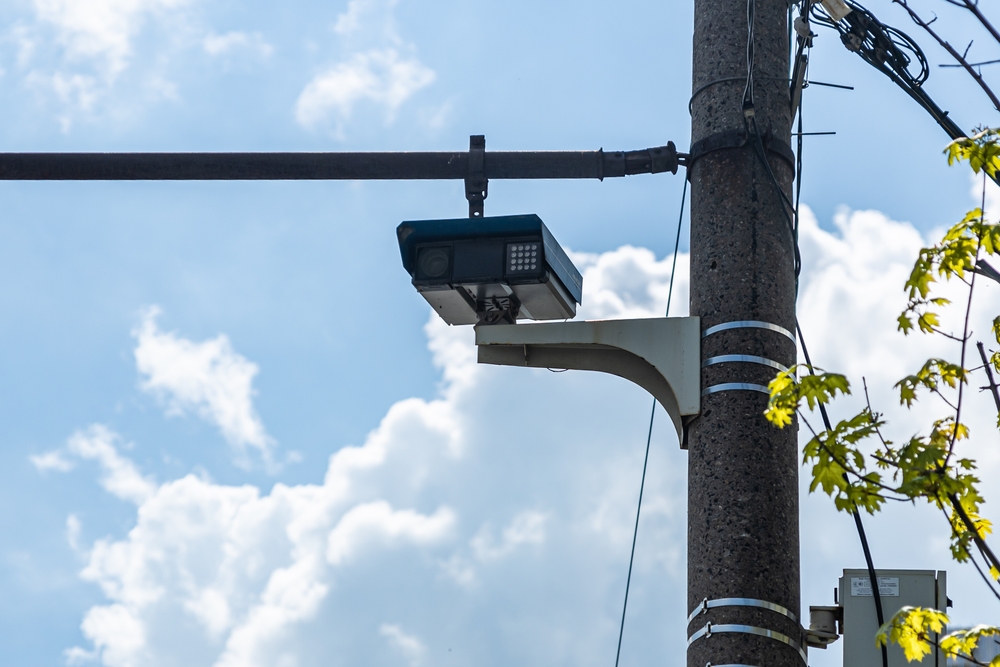
Roadside cameras have played a major role in traffic detection and speed reduction, which have kept our residential streets, highways, and communities safer for some years. From assisting in traffic violation verification to recognizing license plates to regulating traffic lights during high and low car volume periods, the benefits of and usage of roadside cameras continue to grow.
Smart cities also use a network of roadside cameras to give law enforcement valuable clues when crime sprees occur. As a part of a broader road safety management program, these high-definition cameras are a practical solution that can be deployed in various locations where it may be unsafe for law enforcement officers to make traffic stops.
How Roadside Cameras Work
Automated speed enforcement cameras capture, record, and store traffic information within the camera’s line of sight using various technologies, including high-definition cameras, sensors, and 1 of 2 types of radar systems to capture speed. LiDAR speed cameras use the time it takes pulsed laser light or signal to return. The system determines vehicular speed based on the computer’s calculations of successive measurements taken at precise times.
RADAR speed cameras send out a radio wave frequency. The onboard diagnostics will calculate speed by measuring the change in the returned wave’s frequency to record speeding violations. In addition to these two technologies that can record specific speeds for specific vehicles, average speed cameras work in pairs. These cameras are located at two different locations to measure the time it takes a car to move from the sight of one camera to the next to determine average speed. If the average speed exceeds the speed limit, the vehicle is speeding.
Finally, traffic sensor cameras may be located anywhere to record and measure traffic flow and volume. The information from these cameras will be used to determine if traffic light timing needs to be changed or if other roadside traffic technology is needed due to sudden and increased traffic volume.
Types of Roadside Cameras
Roadside cameras have many functions. Enforcement or red-light cameras are not meant to be easily seen by the public. They are located at intersections with high traffic volume and high accident rates or are known to be locations where vehicles typically run red lights. They snap a photo of each vehicle that enters the intersection when the light has turned red.
The main difference between red light and speed cameras is their location. Red light cameras are always placed at intersections, while high-speed cameras may be located anywhere. Speed always contributes to higher accident rates, especially in urban and suburban communities.
Benefits of Roadside Cameras
Speed Management
The primary role and benefit of roadside cameras is to deter speeding. Speed is the number one contributor to accidents and fatal crashes that take the lives of drivers and pedestrians. It may be easy to understand how speed cameras help in urban areas. But they are needed just as much in rural and wooded areas, where the nature of the road (unpaved, hilly), poor area lighting, and the lack of traffic that would naturally regulate speed – are all factors.
When drivers are aware of roadside cameras in these locations, it is not only a warning that they may be captured on camera and cited for speeding, but it is also a warning that slowing down is vital to the safety of everyone. This increased perceived risk of paying a traffic fine works to improve the driver’s awareness that the road can pose a problem at high speeds.
Reduce Severity of Accidents
Accidents will happen, but the most devastating and frequent fatal accidents occur at high speeds. Higher speeds make it difficult to stop, reduce breaking time, and result in a higher impact force. All these factors come as a result of high speed. If speed cameras can reduce the speed at which drivers operate, the driver will have much more time to observe the potential threat and react when an unpredictable situation occurs.
Eliminates the Need for Police Presence
Before the roadside camera, there was the hand-held radar detection device used by highway police officers. This type of manpower would be impossible to maintain as populations grow and cars get faster. Instead of putting first responders and citizens in danger with high-speed pursuits and wasting valuable city personnel to monitor speeding on public roads, roadside cameras are fixed in place, require little or no maintenance, and are better suited to not only monitoring speed but also collect and save roadway data that can be used to improve safety on highways and in communities.
Improve Quality of Communities
Speed cameras are just one part of a municipal plan to improve the quality of life within our communities. Speed bumps, road signage, and roadside cameras work together to make streets safer for children to play, pedestrians to cross, and cars to exit driveways. Lower speeds through these communities make for a quieter neighborhood, safer school areas, smarter construction zones, and give all residents an inherent sense of safety.
Generate Municipal Income
Speeding is against the law, and fines are assessed when anyone is caught speeding. Roadside cameras enforce speed laws and generate income for municipalities that can be used to improve city services. Roadside cameras also confront the negative image that the population may have concerning speed traps. These are areas where police may be accused of purposely waiting to catch speeding cars. These concerns have been eliminated with speed cameras that typically come with warning signage and are fair and equal across the board.
Worksafe Traffic Control Industries specializes in advanced traffic management systems, including cameras and sensors, traffic signage, roadside construction zone safety supplies, and PPE. The women-owned business offers the highest signage and technology quality that adheres to MUTCD guidelines.

